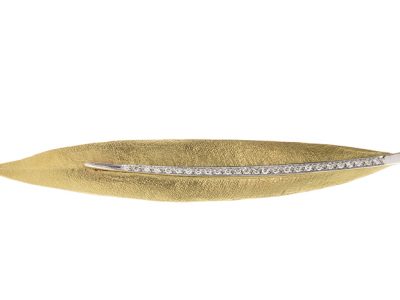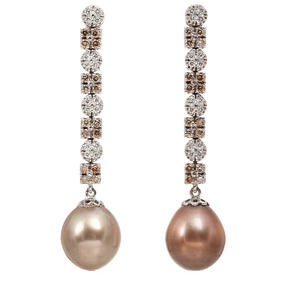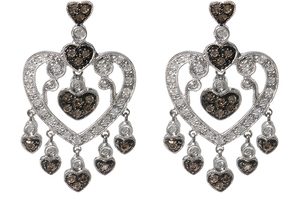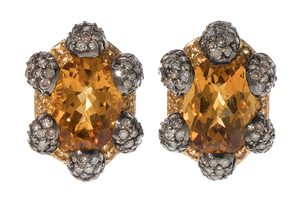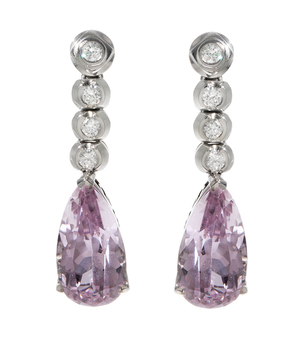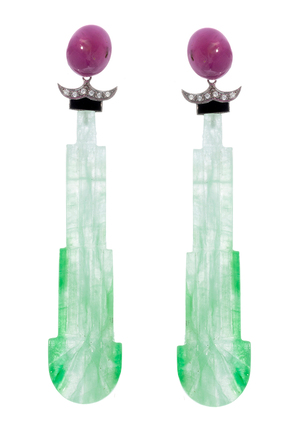The timeless beauty of earrings, a complement to clothing.

The discovery of the so-called Ötzy, the Iceman, a 5000-year-old body in the Italian Alps with an earring in his ear, shows us that earrings have been part of different civilizations since at least the Bronze Age.
The Bible is another place with different mentions of earrings both as “complements” (Hosea 2:13) and as a permanent symbol of slavery (Exodus 21:2-6).
The Roman Pliny the Elder (23-79) criticized the Romans for their exaggerated consumption and scorned, in his encyclopedia Naturalis Historia, Roman women for their newfound taste for pearl earrings.
Thus it said: “…hanging two or three from the ears…and calling them “crotalia” or “castanet earrings” …being glad to hear the sound when they clash with each other…and even announcing (through the streets) the arrival of a wealthy woman…”
In Ancient Egypt more than 6,000 years ago were simple earrings that pierced the ears, serving to attract looks and provoke the interest of others, and of course the pharaoh, had no earrings, and large pieces. Ramses II had thousands of earrings, so sophisticated and elaborately designed that they were obviously custom-made jewelry of great value.
We also find earrings in Asia, in the tombs of kings in the ancient city of Ur (Mesopotamia) where we have specimens from 5000 years ago.
Other ancient peoples, besides the Babylonians, Persians, Indians, Hebrews, Arabs, also used them as a talisman and protection.
Goldsmithing reached such developed levels in Greece (where only women wore earrings), that the display of gold and enamel works of miniature figures was impressive: flowers, fruits, birds or female heads, exquisite earrings for wealthy people. Their use spread among the female population, and less wealthy women could be seen wearing them.
The fall of the Roman Empire and the assumption of the Christian church marked the beginning of the Middle Ages. Not all of them, of course, could order custom jewelry, but it was quite common for them to wear them as a normal part of their party attire.
Single women used them as elements of conquest. The more flashy and ostentatious they were, the more they told the young man what social stratum they came from. In this sense, custom jewelry was and is the best way to display power and social status.
Today, earrings are still part of women’s attire. Their designs, shapes and materials create fashion trends, and often form sets with necklaces, bracelets and rings. Being close to the face, it is possibly the most flattering accessory for women.
Therefore, the choice of the most appropriate earring for each moment is one of the most important choices in women’s styling. Whether as an accessory purchase or as a gift, the earring is and will be an essential element with which a woman will express her beauty looking for that balance in shape, size and color that only a good earring can provide.
Related Posts
Flora and fauna source of inspiration for the art of goldsmithing
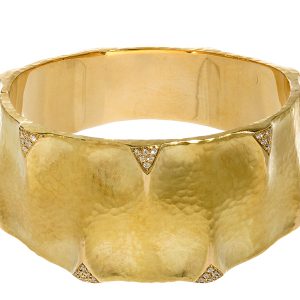
Since the Renaissance with the Medici in Florence and the Sforza family in Milan, Italy has been the cradle of the great artists in Europe.
Great creators have been setting international trends to this day.
Italian goldsmithing is one of the wonders of Made in Italy.
Perfect fusion of tradition and modernity, it synthesizes the love of beauty with artisan experience and the ability to preserve ancient knowledge that has made Italy one of the world leaders in the production of jewelery and goldsmiths.
In Italy there is a flourishing luxury market, of international fame, represented by the so-called distretti (literally district, referring to important production areas) for gold, especially that of Valenza ., which is one of the best known and most important in the international jewelery sector. The district de Valenza includes eight neighboring municipalities where high-end jewelery and goldsmiths are produced and sold.
The city, which will be included among the places of particular interest in the Milan Expo, opened its Gioiello Museum (Museo de la Joya) in 2015.
The small town in Piedmont is the one with the highest density of goldsmiths in Italy, the largest number of artisan companies in goldsmiths and jewelers, and combines the solid tradition of high craftsmanship with a great capacity for technical, stylistic and material innovation. The high level of design, a lively production network and an internationally renowned fair, as well as its training centers and a strong goldsmith tradition eradicated in the territory, make Valenza the cradle of jewelery in Italy and an international benchmark.
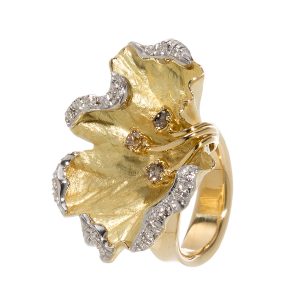
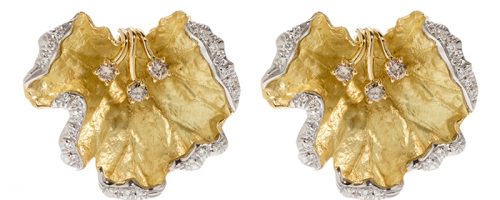
Large-volume creations cannot be simply conceived and drawn, but must be designed and studied to the smallest detail, in order to obtain an extremely particular jewel, such as a sample architecture, that is in harmony with the shapes of the body that He carries them.
To make beautiful jewelry it is not only necessary to know the anatomy of the body but also to have original and creative ideas.
You also have to know in depth the properties of the metal to maximize its characteristics.
The combination of creative ideas and sensitive hands is what really makes a creation unique.
Goldsmith crafts are one of the most widespread professions in Italy, with deep local roots and regional specializations, where companies are often family-owned and make custom-made jewelry for their clients. This typically Italian artistic vocation is illustrated by numerous localities and goldsmith districts.
Sophistication, craftsmanship, independent spirit, love for detail and, above all, for the high sense of delicious femininity and love that a jewel must translate: these are the keys to becoming one of the greats. Vendorafa has managed to combine all these criteria in its pieces.
Vendorafa Lombardi jewelery pieces they are born in essential ways: organic patterns in continuous harmony with intuition and experience, research and creativity. The desire to explore new planning routes and new manufacturing strategies generates harmonious solutions and original tactile effects.
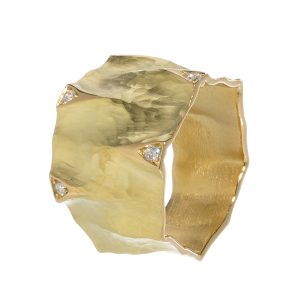
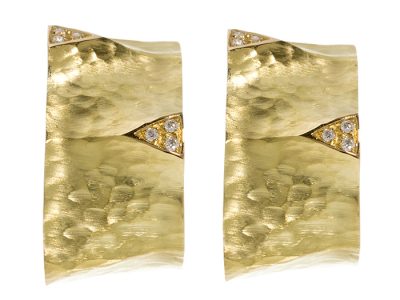
The purity of gold is taken to a higher level by design and enhanced by the greatest attention to detail.
Gold is unique and irresistible, it has fascinated civilizations since the beginning of time. It is an irresistible metal, discovered about 6000 years ago in Mesopotamia, with its beauty and fascination it has always been the metal closest to the Gods.
Its malleability, you have to think that it is a little harder than lead, but so malleable that an ounce of gold of little more than 31 g can be transformed into an ultra-thin sheet of more than 10 m, the ductility means that it can be rolled in more 80 m of gold thread.
Yellow is the color of gold par excellence, jewelry making techniques are so important and diverse that, together with the brilliance of gold, they can fully enhance yellow gold, more than white or pink.
Vendorafa jewels in yellow, pink or white are always 18K, the different shades of white and pink can be obtained with a variable alloy of silver or copper inside.
Lost wax casting, embossing, molding, are still the same traditional techniques, only taking advantage of new technologies that require the special hand of the master craftsmen of Vendorafa Manual processes such as hammering, engraving and embossing have always characterized Vendorafa Lombardi jewels.
Vendorafa creations are conceived, created, designed and made with Italian hands, heart and soul.
The work, made exclusively by hand, enhances the material value of gold, its light and its aesthetic warmth.
More than sixty years of jewelry made in Italy thanks to the passion of expert goldsmiths. Since 1951, Vendorafa has been creating and producing collections that are known and recognized as a sign of Made in Italy style and excellence.
